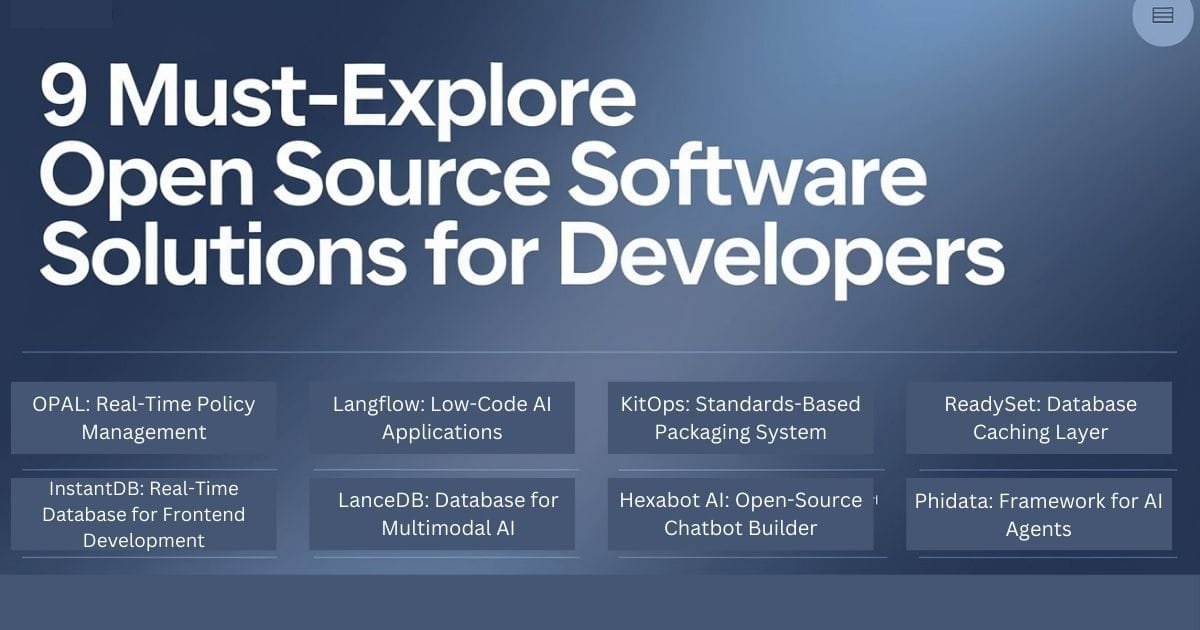

Open-source software solutions play a huge role in today’s tech world. According to a recent study, about 97% of codebases contain open-source elements. For developers, open-source projects provide unique learning opportunities, allowing them to expand their skills, collaborate globally, and explore new technologies like AI. Here are nine open-source projects that can benefit anyone interested in tools like open-source ERP systems and monitoring tools.
OPAL is an open-source administration layer that works alongside policy engines like Open Policy Agent (OPA) and AWS Cedar. For developers managing large projects with complex access control needs, OPAL simplifies permissions and ensures that policies stay up-to-date.
If you’re managing distributed teams or user groups, OPAL makes synchronising permissions across all systems easy.
Langflow is a low-code, open-source application builder for creating complex AI applications. It’s beneficial for developing Retrieval-Augmented Generation (RAG) applications and other multi-agent AI systems, even those without extensive coding experience.
Whether working on AI-based open-source ERP or applications needing real-time processing, Langflow provides a simplified development process.
KitOps is an open-source packaging and versioning tool that uses OCI standards, streamlining collaboration for data scientists, software developers, and SREs managing AI or ML models.
By combining all project components under one standard, KitOps simplifies version control and makes sharing or scaling AI applications within teams easy.
ReadySet is an open-source database caching layer that enhances application performance, particularly for SQL-heavy applications. It works by caching complex SQL queries, which helps reduce load on the central database.
ReadySet is particularly useful in applications like analytics or content platforms where read-heavy databases are common.
InstantDB is an open-source solution that offers a simple way to build real-time applications without the hassle of backend complexity. It manages multiple tasks, such as authentication and scaling, allowing you to focus on front-end development.
For developers looking to add a real-time component to their projects without a heavy backend setup, InstantDB can be a great tool.
LanceDB is a specialised database for applications dealing with various data types, like images, videos, and text. Unlike other vector databases, it combines metadata and embeddings, making it highly efficient for complex data management in AI projects.
For AI projects needing ample data storage and quick retrieval, LanceDB offers a scalable, flexible solution for managing multimodal data.
Hexabot AI is an open-source chatbot builder designed to make AI chatbot development more accessible. It allows developers to create chatbots without complex coding, which is perfect for customer support or e-commerce applications.
Hexabot AI offers a no-code solution to building intelligent chatbots, making it accessible for small businesses and developers building customer-facing tools.
Phidata is an open-source framework focused on AI agent development, allowing for accessible state and memory management in complex systems. It provides a solid base for creating AI-powered applications that perform various tasks.
Phidata is ideal for developers building agentic systems and can be a valuable tool for teams working on AI-driven automation.
Stack Auth is an open-source alternative to popular authentication solutions like Auth0, offering a fully customisable and self-hosted system. It’s precious for projects requiring robust user data control and enhanced security.
Stack Auth is flexible and cost-effective for developers wanting an open-source solution for managing user authentication.
These open-source software solutions showcase open-source tools’ power and flexibility. Whether you’re interested in real-time data updates, building AI-powered applications, or enhancing your project’s security, these tools provide versatile solutions. Explore these open-source tools’ potential and how they can support your development journey.






Welcome to IT Business Digest, your ultimate source for the latest information technology news and updates. Stay ahead with our in-depth coverage of emerging technologies, industry trends, and expert insights.